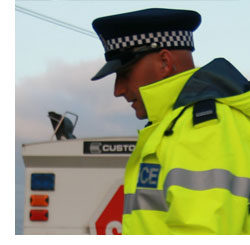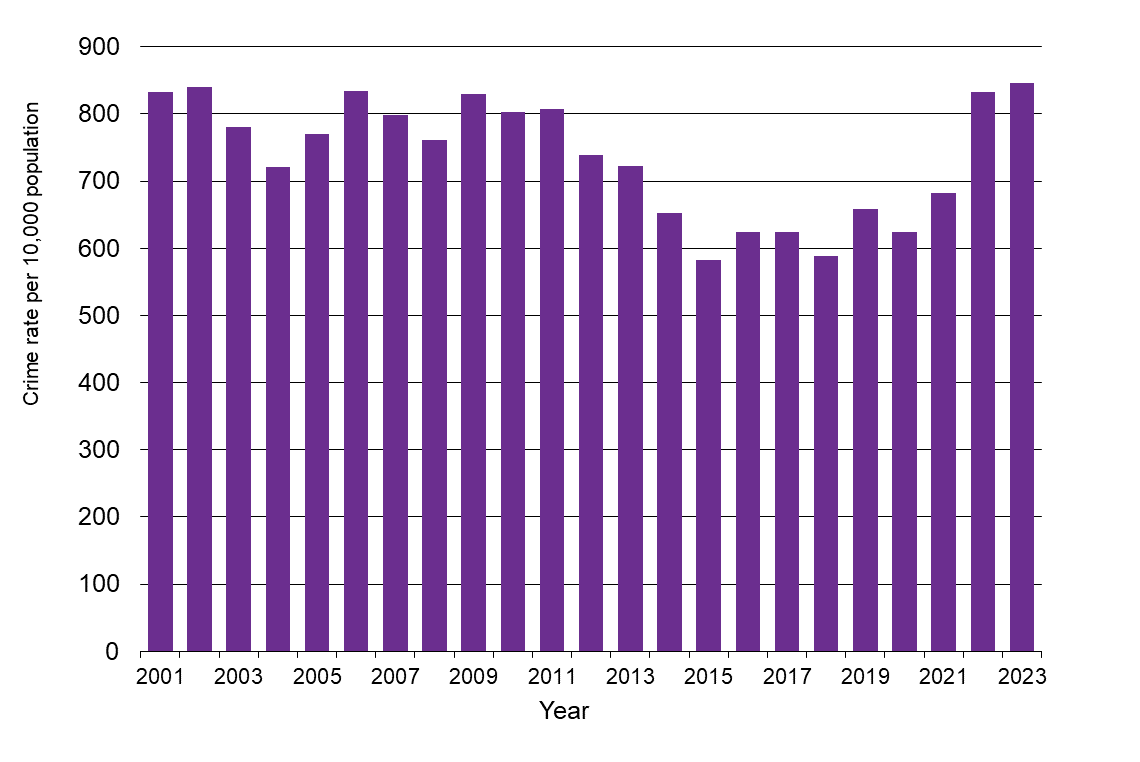Crime

 CRIME
CRIME
| WORSENING TREND |
Following a sustained period of low crime in recent years, the annual number of victimisations per 10,000 population in the Waikato region has increased.
This indicator is the number of reported crimes (victimisations) in the Waikato Police District per 10,000 population per year, based on New Zealand Police data on recorded offences and Waikato region population estimates.
Why is this indicator important?
Crime is a topic of considerable public interest. Rising levels of reported crime are perceived as a threat to safety, property and people’s sense of wellbeing. This can influence people’s decisions on where and how they live. Higher levels of crime may also lead to increased pressure on support systems and other resources (for example, physical and mental healthcare services, financial assistance from the government or charities).
Crime

Source: For 2015 onwards, data are from New Zealand Police victimisation data combined with territorial authority population estimates from Statistics New Zealand. Prior figures are estimated from historical trends in rates of recorded offences.
| Year | Rates of recorded crime per 10,000 population |
| 2001 | 832 |
| 2002 | 841 |
| 2003 | 781 |
| 2004 | 721 |
| 2005 | 770 |
| 2006 | 834 |
| 2007 | 798 |
| 2008 | 761 |
| 2009 | 829 |
| 2010 | 803 |
| 2011 | 807 |
| 2012 | 739 |
| 2013 | 722 |
| 2014 | 653 |
| 2015 | 583 |
| 2016 | 625 |
| 2017 | 625 |
| 2018 | 589 |
| 2019 | 658 |
| 2020 | 623 |
| 2021 | 682 |
| 2022 | 833 |
| 2023 | 846 |
What is this indicator telling us?
- Changes in the number of crimes recorded annually in the Waikato region generally reflect the national trend. In recent years there has been an increase in the number of recorded victimisations per 10,000 population, following a prior period with record low levels of crime. Dishonesty offences in the form of theft, unlawful entry, robbery and related offences regularly account for more than half of all recorded crime. Recent years have seen a rapid increase in these types of offences.
- Care needs to be taken in the interpretation of reported crime statistics over time as they may be affected by changes in public reporting rates (e.g. due to greater awareness and reporting of family violence) and police administrative changes.
- Comparing across the Waikato territorial authorities, the highest rate of crime victimisation in the year ended December 2022 was in Hamilton (1,239 persons/organisations/premises victimised per 10,000 resident population) and the lowest in Ōtorohanga (478 per 10,000).
- The annual rate of deaths by assault per 100,000 population is a high-level indicator of the extent of violent crime in the community. Over the period 2006 to 2019, the number of deaths per annum has been subject to a high level of annual volatility but no significant upward or downward trend. On average over this period there were approximately five deaths due to assault per year in the Waikato District Health Board (DHB) region and approximately 62 per year in New Zealand as a whole. Adjusting for population size, the annual rate of recorded deaths by assault in the Waikato DHB region was similar to the national average over the period 2006 to 2019, at around 1.4 per 10,000 people.
- New Zealand has one of the lowest crime rates in the world (assaults and homicide rates). According to the latest OECD data, New Zealand's homicide rate is 1.3 per 100,000 people, significantly lower than the OECD average of 2.6.
DATA SOURCE AND SUPPORTING INFORMATION
Victimisation trend data are available online at policedata.nz. Source page for counts is Victimisations (police stations), toggled from the ‘Districts’ tab. Data compiled 24 March 2024 (note the data may be revised retrospectively). Waikato regional count is the sum of victimisations at the territorial authority level (excluding Rotorua). These were divided by estimated population from Stats NZ, then multiplied by 10,000 to arrive at a crime rate estimate for each TA and hence the region as a whole.
New Zealand’s crime statistics were transformed from 2014/15, resulting in new measures and trends. WPI worked with NZ Police guidance to develop its approach to calculating regional trend series for the period pre-July 2014.
Further information about offence and victimisation trends is available from a New Zealand Parliament Research Paper.
Territorial authority figures were compiled from New Zealand Police data.
Secondary data on ‘deaths due to assault’ are from (1) the Ministry of Health’s Mortality data tables – annual numbers of assault deaths by DHB region of domicile (data for the Waikato DHB region) and (2) population data from Statistics New Zealand NZDot.Stat website. The indicator is calculated as ‘crude rates’ (i.e. not age-standardised). Usually mortality rates are age standardised for comparison purposes between regions or countries, however this generally needs around 30 events to be robust so is not appropriate for data on Waikato assault deaths by year. National results for 2019 were higher than usual due to 51 deaths associated with the Christchurch mosque shootings.
Update details: Annual calendar year victimisation data are reported to 2023, with 2024 results and corresponding population estimate available in early 2025.
Customised data request requirements: Nil.
DATA AVAILABILITY – OTHER THAN WAIKATO REGION:
Territorial Authority (TA) disaggregation: Yes
Other regions: Yes
New Zealand: Yes
Other countries/ Organisation for Economic Co-operation and Development (OECD): Secondary statistics from the OECD Wellbeing Report: Safety – Key findings. In particular, the OECD findings state that: ‘New Zealand’s homicide rate is 1.3, lower than the OECD average of 2.6. New Zealand ranks 27/41 on homicide rate amongst the OECD countries.


To ask for help or report a problem, contact us
Tell us how we can improve the information on this page. (optional)